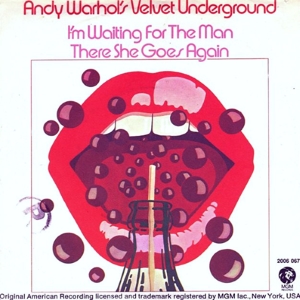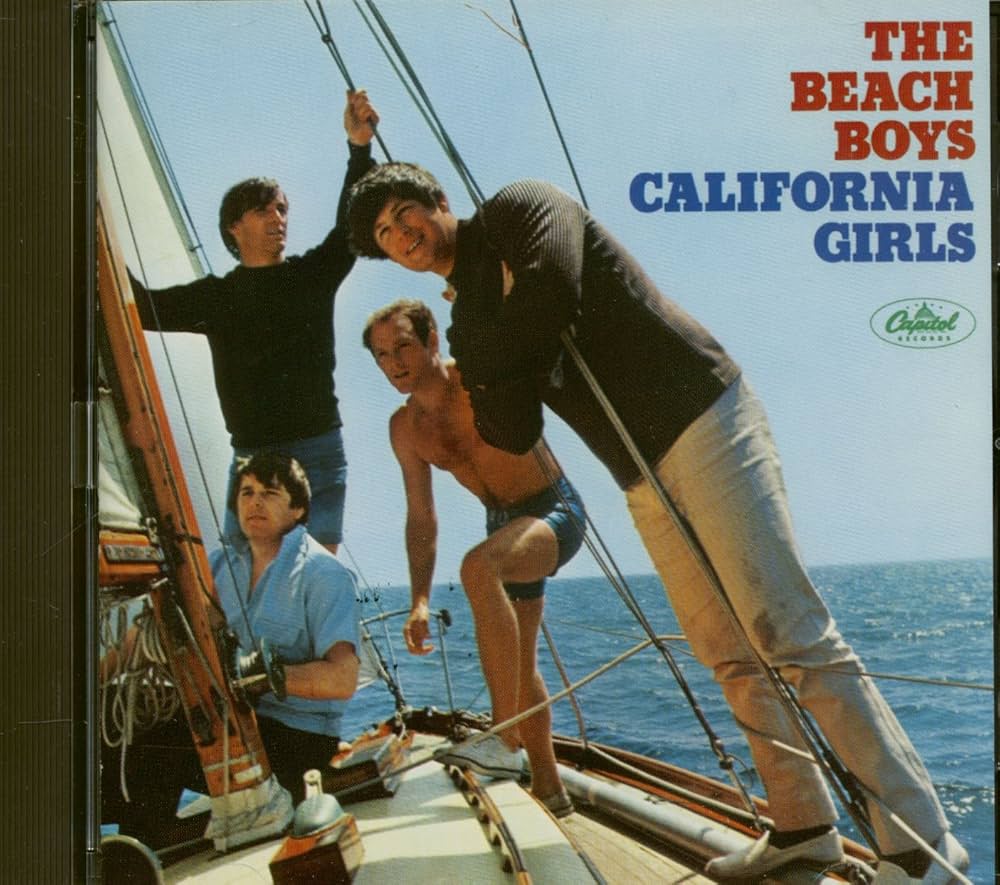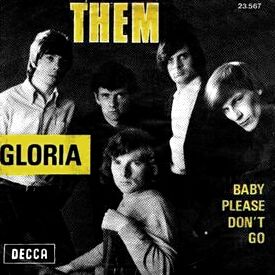 The Velvet Underground’s “I’m Waiting for the Man” stands as a defining moment in rock music, blending raw energy with stark storytelling. Released in 1967 on their groundbreaking debut album The Velvet Underground & Nico, the track captures the tension and rhythm of city life through a minimalist but gripping musical lens. Lou Reed’s narrative vocals, paired with the band’s hypnotic instrumentation, create a soundscape that feels both urgent and detached, reflecting the pulse of urban existence.
The Velvet Underground’s “I’m Waiting for the Man” stands as a defining moment in rock music, blending raw energy with stark storytelling. Released in 1967 on their groundbreaking debut album The Velvet Underground & Nico, the track captures the tension and rhythm of city life through a minimalist but gripping musical lens. Lou Reed’s narrative vocals, paired with the band’s hypnotic instrumentation, create a soundscape that feels both urgent and detached, reflecting the pulse of urban existence.
While the song has often been associated with the underground scene of 1960s New York, its impact goes beyond place or time. It embodies the Velvet Underground’s ethos: unflinching observation, emotional restraint, and a willingness to confront everyday realities without embellishment. It is a song that balances storytelling, mood, and musical drive in a way that few other tracks of its era could.
The Velvet Underground’s Vision
By the mid-1960s, The Velvet Underground had established themselves as a band willing to push the boundaries of rock music. Lou Reed’s sharp songwriting, John Cale’s experimental instrumentation, Sterling Morrison’s guitar work, and Maureen Tucker’s distinctive drumming combined to create a sound that was simultaneously avant-garde and grounded. Their music focused on the realities of urban life, often highlighting experiences and emotions that were rarely addressed in popular music of the time.
“I’m Waiting for the Man” exemplifies this approach. The song presents a scene of anticipation and tension with minimal lyrical flourishes. It immerses the listener in a world of movement, anticipation, and subdued anxiety, without romanticizing or sensationalizing its subject. The Velvet Underground’s ability to convey intensity and realism through simplicity became a hallmark of their work and an influence on countless artists in the decades that followed.
Lyrics and Storytelling
The lyrics of “I’m Waiting for the Man” are economical yet striking, painting a vivid scene in a handful of lines:
“I’m waiting for my man
Twenty-six dollars in my hand
Up to Lexington 125
Feel sick and dirty, more dead than alive.”
Reed’s words describe a straightforward journey through the city, capturing both the monotony and anxiety of waiting. The repeated refrain emphasizes anticipation and reinforces the tension of the scene. Reed’s vocal delivery, calm and matter-of-fact, contrasts with the underlying urgency of the rhythm, giving the song a haunting, almost hypnotic quality.
The power of the lyrics lies in their specificity. Street names, numbers, and physical sensations anchor the listener in the world Reed is describing, creating a sense of immediacy. There is no judgment or sentimentality; the song simply presents a slice of life, letting the listener experience it as though walking the streets alongside the narrator.
Instrumentation and Musical Style
Musically, “I’m Waiting for the Man” is driven by a propulsive, guitar-based groove that moves steadily throughout the track. Sterling Morrison’s guitar riffs are precise and repetitive, providing a hypnotic backbone that mirrors the narrator’s repetitive, tense wait. John Cale’s bass and viola contributions add texture and depth, subtly enhancing the song’s mood without overwhelming the main riff. Maureen Tucker’s drumming, spare but effective, locks the rhythm in place, adding to the sense of relentless forward motion.
Lou Reed’s vocal approach is integral to the song’s impact. His delivery is almost conversational, detached but charged with tension. The restraint in his voice contrasts with the underlying energy of the instrumentation, creating a push-and-pull effect that draws the listener in. This minimalist approach allows the song to convey intensity without relying on excess or theatrics—a hallmark of The Velvet Underground’s style.
Capturing the City
“I’m Waiting for the Man” succeeds in creating a sonic representation of urban life. The steady rhythm, muted instrumentation, and clipped vocals evoke the motion of streets, the wait at a bus stop, and the energy of a city constantly on the move. The song immerses listeners in its environment, offering a sense of place that is vivid and compelling despite—or perhaps because of—its sparseness.
The band’s approach to storytelling through music, rather than relying solely on lyrical content, is evident here. Every note and rhythm serves the scene, reinforcing the narrative tension and emotional landscape. In this way, the track functions as both a story and a mood piece, capturing the feeling of anticipation, unease, and urban isolation in real time.
Influence and Legacy
Since its release, “I’m Waiting for the Man” has been widely recognized as one of The Velvet Underground’s most influential tracks. Its combination of minimalist instrumentation, precise storytelling, and evocative mood has inspired generations of musicians across genres, from punk and alternative rock to indie and experimental music.
Artists such as David Bowie, Iggy Pop, and The Strokes have cited The Velvet Underground as a key influence, particularly their ability to explore everyday urban experiences with honesty and creativity. The song’s structure, balancing repetition with subtle variation, has become a model for how minimalism can convey both tension and emotion effectively.
“I’m Waiting for the Man” also remains a staple in discussions of rock’s evolution. It represents a departure from the psychedelic and heavily produced sounds of the late 1960s, embracing rawness, simplicity, and realism. In doing so, it helped lay the groundwork for punk, post-punk, and other movements that valued directness and authenticity over polish.
Enduring Appeal
The track’s enduring appeal lies in its universality. While it is rooted in a specific place and experience, the song’s themes—waiting, anticipation, tension, and urban isolation—resonate broadly. Listeners in any city or era can relate to the feeling of being caught in a moment, waiting for something uncertain, and navigating a world that is at once exciting and intimidating.
Moreover, “I’m Waiting for the Man” exemplifies the power of restraint. The Velvet Underground’s ability to convey intensity without excess allows the song to remain fresh and compelling decades after its release. Every listen reveals subtle details, from the interplay between guitar and drums to the nuanced phrasing of Reed’s vocals, ensuring that the song rewards repeated attention.
Conclusion: A Sonic Portrait of Urban Life
“I’m Waiting for the Man” is more than a rock song; it is a sonic portrait of city life, capturing tension, anticipation, and human experience with precision and honesty. The Velvet Underground’s minimalist approach, combined with Lou Reed’s observational lyricism, creates a track that is both immediate and timeless.
Its influence on rock, punk, and alternative music cannot be overstated. The song demonstrates how simplicity, repetition, and focused storytelling can produce music that is as compelling emotionally as it is sonically. It is a track that immerses the listener in its environment, offering both narrative clarity and musical sophistication.
Even decades after its release, “I’m Waiting for the Man” continues to resonate with listeners, offering a glimpse into the energy, tension, and pulse of urban life. The Velvet Underground captured a moment that feels alive, unvarnished, and real, creating a song that is as powerful today as it was in 1967.
It stands as a testament to the band’s vision, their willingness to confront reality head-on, and their skill at translating the rhythm of the streets into music that continues to inspire and captivate. In its spare riffs, precise rhythm, and narrative clarity, the song remains a touchstone for musicians and listeners alike—a reminder that honesty, tension, and observation can create rock music that endures.



